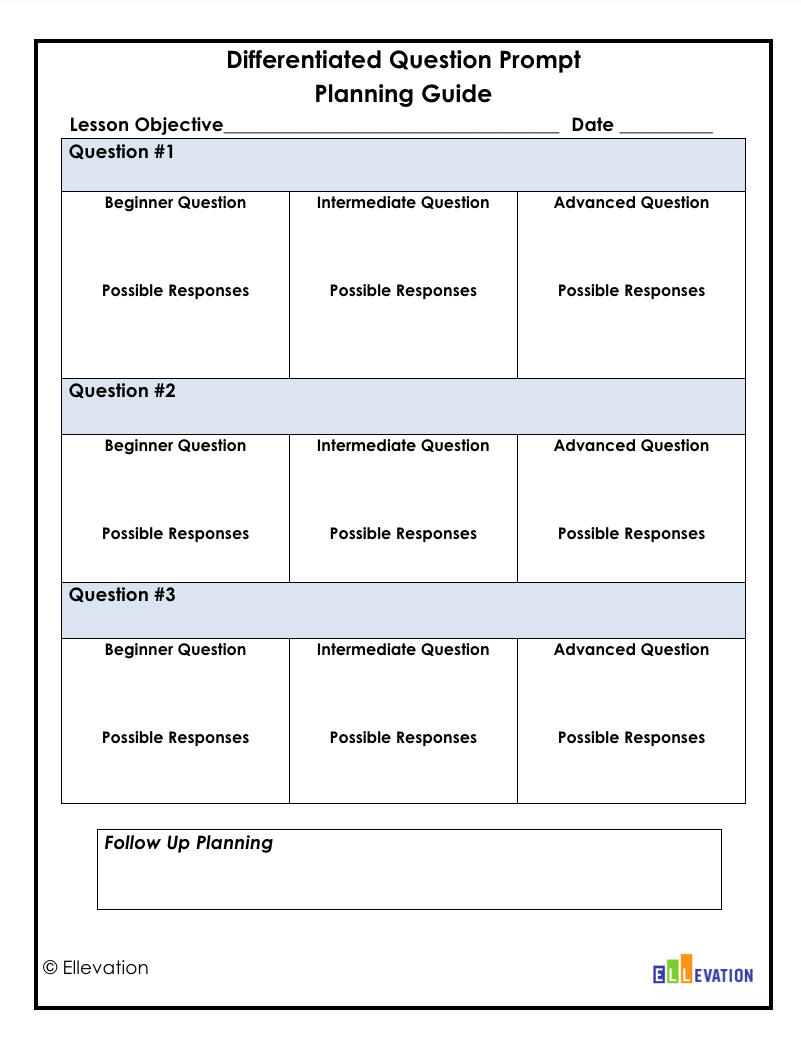What is differentiated instruction?


What is differentiated instruction?
In every classroom, each student brings their own unique blend of experiences, strengths, and areas for growth, and one teaching approach or learning experience will not fit all learners. Instead, differentiated instruction is a dynamic educational strategy that includes options suitable for a wide range of learners.
While the term is commonly used, it is important for all educators to have a clear understanding of the definition of differentiated instruction, how to differentiate in their classroom, and why it is particularly important for English learners.
What is differentiated instruction?
Differentiated instruction refers to making informed changes to your instruction to leverage your students’ strengths and meet their needs. These changes come from understanding the kind of support individuals or groups of students need to be able to fully engage in their learning: knowledge of the student and the data. Differentiated instruction is also an ongoing process, so the support a student needs will change as they learn, develop, and grow.
Important to note: differentiation does not mean having different expectations for individual students; rather, it means providing multiple pathways to arrive at the same goal.
Why is differentiated instruction important for ELs?
We know that all students come to class with different personalities, backgrounds, and skill sets. Differentiation allows teachers to meet all students where they are and move them intentionally towards their goals.
For ELs, language is often the biggest barrier to learning. Through differentiation, we can ensure that students are continuing to build language skills while engaging with the content, which is critical in building equitable education opportunities.
Common misconceptions
As with any popular buzzword in education, there are a number of commonly held misconceptions.
Differentiated instruction is not:
- Providing a different lesson, text, or assessment for every student
- It’s not individualized instruction, but instruction to provide every student with a way to access and engage with content.
- Lowering academic expectations or reducing rigor
- Benefiting from support to access or engage with content does not mean students have lower cognitive abilities.
As career teacher, consultant, and author Tan Huynh puts it, “Differentiating does not shrink the size of the mountain. It’s about making getting to the top more possible.”
Strategies for differentiation:
Differentiation can happen at all phases of the learning cycle, as described in Carol Ann Tomlinson’s framework: you can differentiate the content (direct instruction), the process (how students engage with the content), and the product (assessment of student learning). But it’s not always necessary to do it all at once, especially for educators new to differentiation; begin with one and continue making adjustments as you learn more about what students need.
1. Scaffolding instruction: Making content comprehensible is often the first step in differentiating instruction; it’s essential for all students to have a way to access the content they’re learning. A few strategies you can take include:
- Visual supports to illustrate key terms: consider keeping these displayed throughout instruction so students can refer back to them as needed.
- Breaking down lengthy content: smaller chunks enable you to include pauses for support or to check for comprehension.
- Providing graphic organizers: these can be incorporated with intention for students to organize their ideas or take notes while reading or listening to content.
2. Differentiating assessments: Consider what the end goal for student learning is, and then be sure that any assessment is focused on measuring progress toward that goal.
- Provide options for how to show learning: is a language-heavy, reading-and-writing based assessment necessary? Can students show learning through speaking, a multimodal assessment, or even informal written assessments with more choice built in?
- Download this Differentiated Questions Planning Guide to create assessments or checks for understanding that account for different levels of language proficiency.

- Offer supports during assessment: providing students with word banks, bilingual glossaries, and access to anchor charts can lower language barriers and help students more accurately demonstrate their content mastery.
3. Strategic partners and groups: Once you have successfully implemented differentiated instruction and assessments, you may find that your students need additional support during the process phase of learning. There are a variety of strategies teachers can use, but a good place to start is through leveraging intentional grouping. Putting clusters of students together to engage with and explore the content is a great way to support growth. The two types of groups to consider are:
- Heterogeneous, or students at different language levels. This offers low-risk opportunities for students to practice and learn from their peers’ language use.
- Homogenous, or students at similar language levels or with similar linguistic backgrounds. This will enable students to work together using materials and processes that meet their needs.
In either setting, teachers should use assessment data to inform the groupings and pair students up strategically to target areas for growth.
In education, one size never fits all. Differentiating instruction is an important practice for ensuring more inclusive classrooms and equitable outcomes for all students.
This article was written in partnership with Anamika Dugger, Instructional Content Specialist for Ellevation Strategies. Anamika has taught ESL, ELA, and writing for multilingual learners in the US, Middle East, and Asia, and is passionate about ensuring that all students have access to a high-quality, language-rich education.